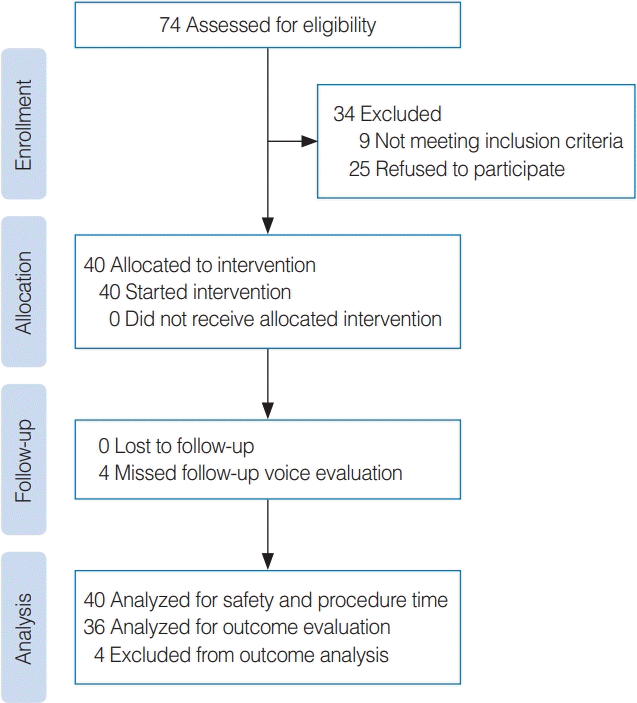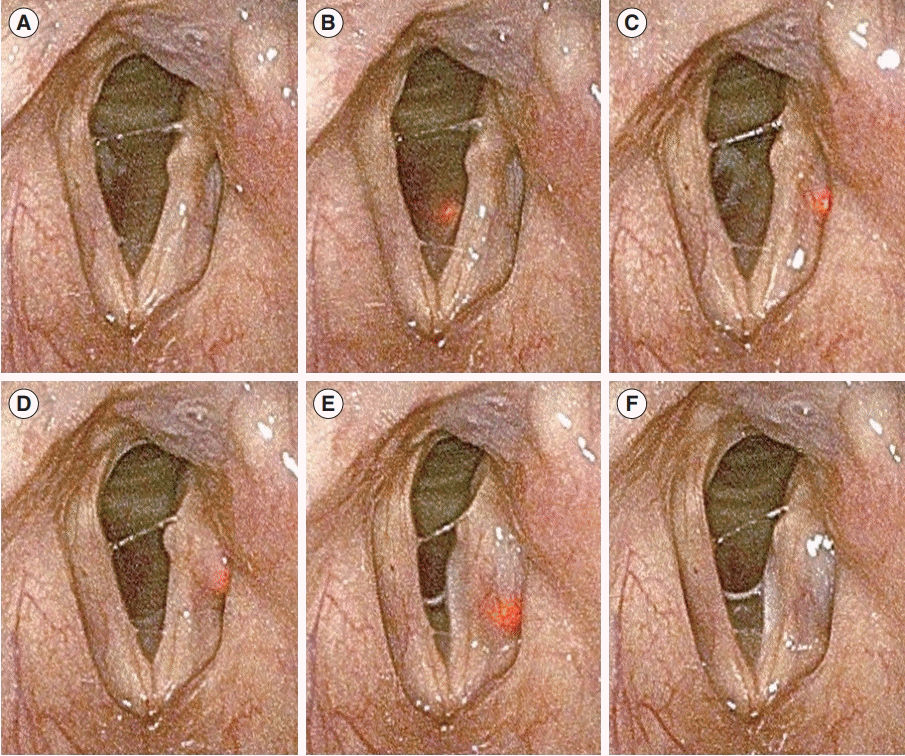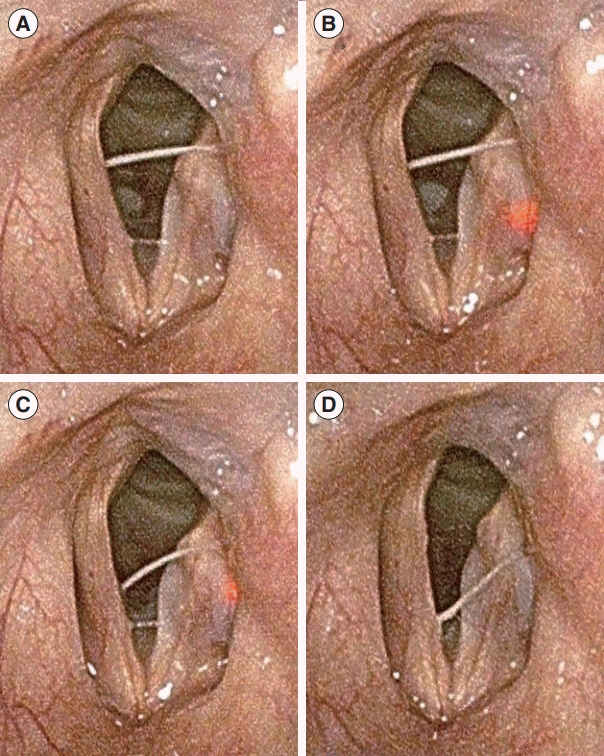Abstract
Objectives.
Methods.
Results.
Notes
The corresponding author, Wonjae Cha, is the inventor of the device. Pusan National University and Pusan National University Hospital hold the patents related to the device, as granted by the Korean Intellectual Property Office (KR101699229B1), the Patent Cooperation Treaty (WO2017039193A1), and the United States Patent and Trademark Office (US15/536,419). Pusan National University and Pusan National University Hospital granted Solmedix Ltd., an exclusive license and the right to use. No other potential conflicts of interest relevant to this article were reported.
ACKNOWLEDGMENTS
REFERENCES
Fig. 1.

Fig. 2.

Fig. 3.

Fig. 4.

Table 1.
Table 2.
| Variable | Value (n=40) |
|---|---|
| Injection volume for RL-VFI | 1.0±0.4 |
| <0.7 mL | 15 (37.5) |
| >0.7 mL and ≤1.0 mL | 9 (22.5) |
| >1.0 mL | 16 (40.0) |
| Procedure time of the initial injection with RL-VFI (sec) | |
| Aiming time | 22.6±18.4 |
| Injection time | 73.6±32.8 |
| Total procedure time | 95.6±40.6 |
| Procedure time of the additional injection with RL-VFI (sec)a) | |
| Aiming time | 17.2±15.0 |
| Injection time | 62.0±69.3 |
| Total procedure time | 79.2±70.5 |
Table 3.
| Variable | Preoperative | Postoperative | Changea) | Change (%)b) | P-value |
|---|---|---|---|---|---|
| VHI-10 | |||||
| Total | 33.7±8.4 | 24.1±12.3 | −9.6 | −28.5 | <0.001 |
| GRBAS scale | |||||
| Grade | 2.2±0.6 | 1.6±0.7 | −0.6 | −27.3 | <0.001 |
| Rough | 1.9±0.9 | 1.3±0.8 | −0.6 | −31.6 | <0.001 |
| Breathiness | 2.1±0.7 | 1.4±0.8 | −0.7 | −33.3 | <0.001 |
| Asthenia | 0.03±0.2 | 0.03±0.2 | 0 | 0 | 1.000 |
| Strain | 0±0 | 0±0 | 0 | 0 | 1.000 |
| Total | 6.3±2.0 | 4.4±2.0 | −1.9 | −30.2 | <0.001 |
| Aerodynamic study | |||||
| MPT (sec) | 4.2±3.5 | 8.8±6.0 | 4.6 | 109.5 | <0.001 |
| MEA (L/sec) | 0.5±0.5 | 0.3±0.3 | −0.2 | −40.0 | 0.004 |
| MSPL (dB) | 74.5±5.6 | 77.9±5.9 | 3.4 | 4.6 | 0.003 |
| AE (ppm) | 86.0±210.6 | 165.7±261.0 | 90.0 | 104.7 | 0.144 |
| EV (L) | 1.6±1.1 | 1.7±1.0 | 0.1 | 6.3 | 0.447 |
| Acoustic analysis | |||||
| F0 (Hz) | 163.3±80.6 | 146.6±51.2 | −16.7 | −10.2 | 0.049 |
| STD (Hz) | 15.2±16.3 | 6.2±8.0 | −9.0 | −59.2 | 0.001 |
| Jitter (%) | 6.7±5.6 | 3.2±3.3 | −3.5 | −52.2 | <0.001 |
| RAP (%) | 3.9±3.3 | 1.9±1.9 | −2.0 | −51.2 | <0.001 |
| Shimmer (%) | 13.4±10.1 | 7.2±4.2 | −6.2 | -46.3 | <0.001 |
| APQ (%) | 9.4±6.7 | 5.2±3.4 | −4.2 | −44.7 | <0.001 |
| NHR | 0.3±0.2 | 0.2±0.1 | −0.1 | −33.3 | <0.001 |
| VTI | 0.13±0.11 | 0.06±0.03 | −0.06 | −46.1 | <0.001 |
| DSH | 1.6±3.4 | 1.4±4.2 | −0.2 | −12.5 | 0.820 |
| NSH | 0.4±0.8 | 0.6±1.7 | 0.2 | 50.0 | 0.470 |
Values are presented as mean±standard deviation.
VHI, voice handicapped index; GRBAS, grade, roughness, breathiness, asthenia, and strain; MPT, maximum phonation time; MEA, mean expiratory airflow; MSPL, mean sound pressure level; AE, aerodynamic efficiency; EV, expiratory volume; F0, fundamental frequency; STD, standard deviation of fundamental frequency; RAP, relative average perturbation; APQ, amplitude perturbation quotient; NHR, noise-to-harmonic ratio; VTI, voice turbulence index; DSH, degree of sub-harmonics; NSH, number of sub-harmonic segments.




 PDF
PDF Citation
Citation Print
Print



 XML Download
XML Download